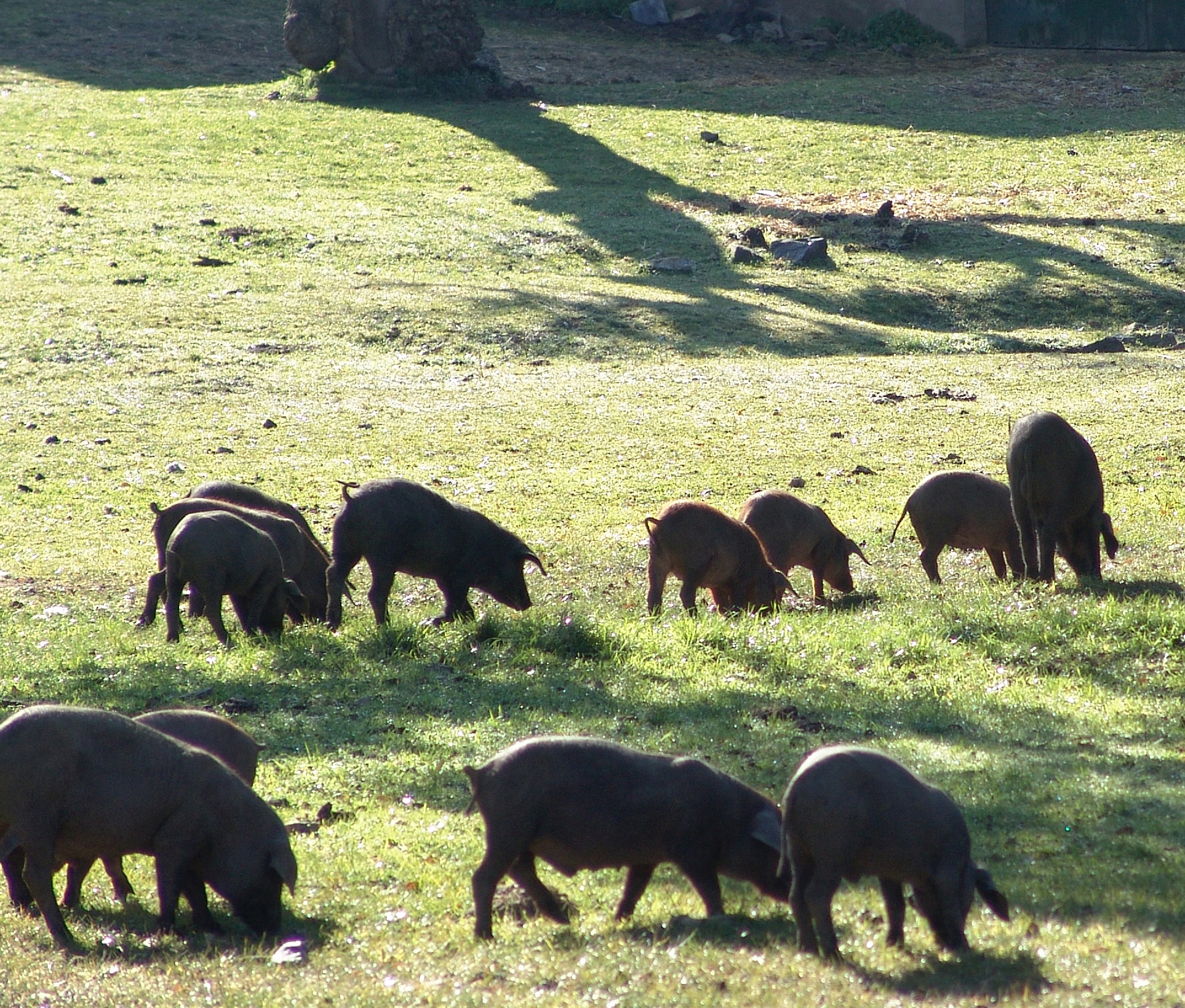Process breeding and fattening
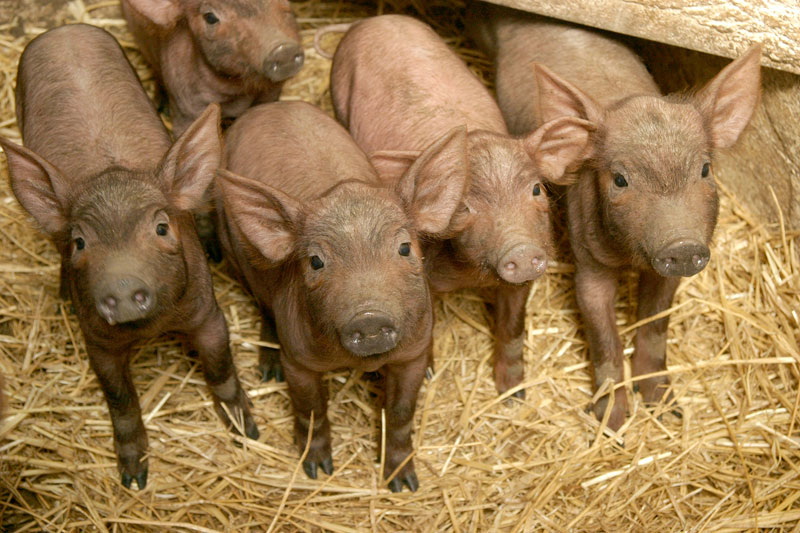
Although the iberian pig has innate qualities which make it possible to begin its life in a wild way in the countryside, usually the birth happens with the rancher collaboration. For that aim, are prepared in the farms, with wood or other materials, some refuges with an inverted ‘v’ shape looking like a Canadian tent, where the females look for shelter to give birth. This procedure, called camping system, besides of working really economic, presents the advantage of the quick suckling pig adaptation with the environment where the fatten up will be developed.
Productive cycle phases
After the gestation which has an average length of 114 days; three months, three weeks and three days, the litter (over six or eight litters) begins the biological and productive cycle where may be distinguished the next phases:
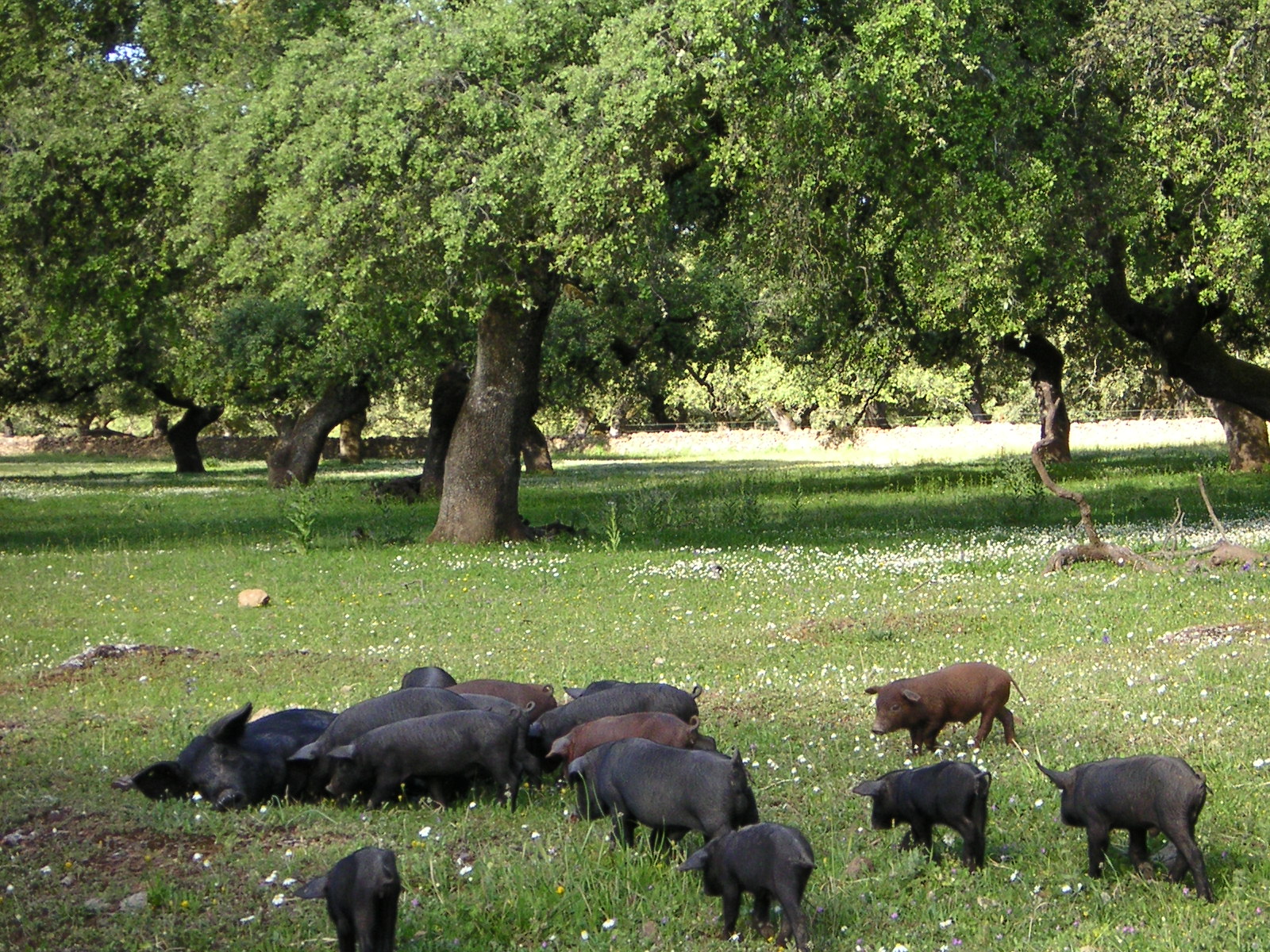
- Suckling pig. It means the lactation and raise phases of the animal where it reach until 30 kilograms with an age of more than three months. In this phase, two stages may be differenced:
– Unweaned suckling pig. Period in which the pig only feeds with maternal milk during 45 to 60 days and where the pig reachs the 14 kilograms. – Weaned suckling pig. From the 55 days, the weaned is produced, being feeded the animal, in this stage, with cereal compounds until the 100 days where it Hill reachs the 30 kilograms.
- Pig. It cobres the ‘recria’ phase where it’s feeded with cereals, herbs, pulses and roots in the countryside. This is a vital importante stage because the pig learn how to look for the food in the pastures, developing, with the daily exercise, the muscular system. In this stage, the pig reachs the 65 kilograms and dures until five months.
- Primal. In this period it continues the ‘recria’ phase, prior to the last fatten up phase. The animal reachs the 90/100 kilograms with at least nine months and it’s ready to begin the decisive fatten up phase.
- Fat. It’s called that to the pig which are in the fatten up phase.
This last stage is decisive to establish the final quality of the products obtained from the animal. For that, depending on the feeding in this last phase, they may be classified in three categories or kind of products:
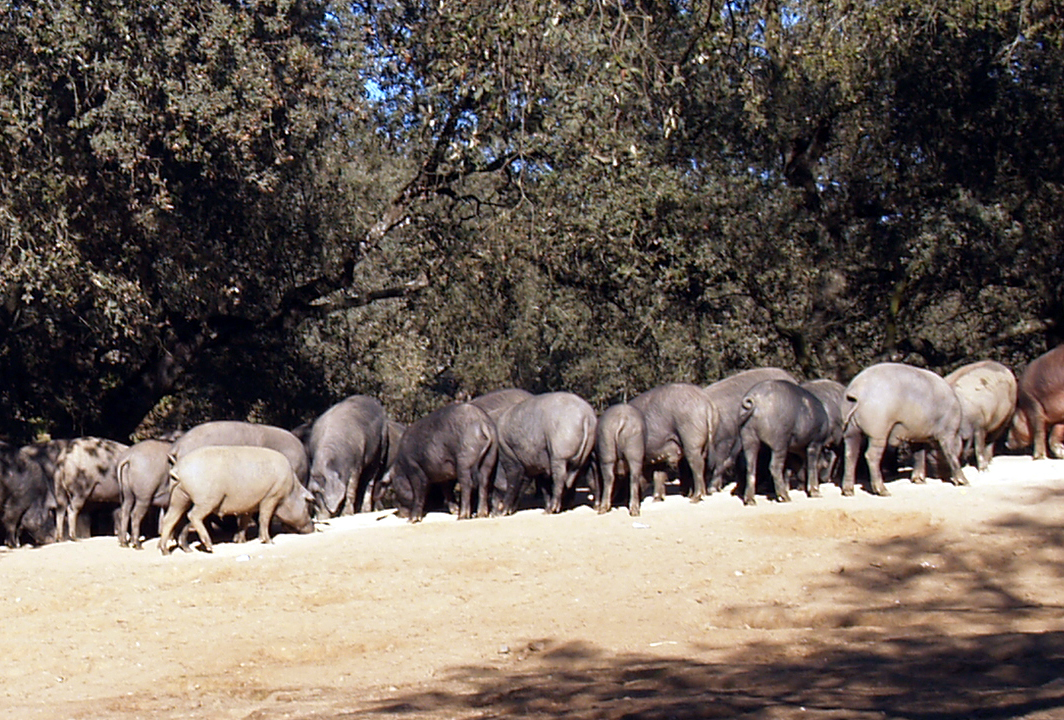
a) Acorn-fed or montanera. This denomination is reserved for that products derived from pigs which have fattened at leas 4 ‘arrobas’ (46 kilograms) with a diet exclusively based in products from the pastures, where the acorns and natural countryside herbs have a fundamental role as nutrients, since they will be the main responsible of that pigs greasy meat.
The ‘montanera’ begins in October and extends until February. In this crucial stage, the optimum feed of the iberian pigs in the Jabugo’s environment is responsibility of the ‘vareador’ figure who will shake the holm oaks with the most ripen fruit for the correct fatten up. So, the herd, follows the ‘vadeador’ who will rationalize the consum depending on the interest on the tree, giving priority to the most far-off, so when pig weight increases it wouldn’t be advisable excessive movement. This system also will provoke a controlled exercise over the pig, very beneficial to make the fat infiltrate in the lean meat, in the muscular zones of the animal, and the consequence of that is the peculiar texture and the incomparable greasiness of the iberian products produced under this traditional method.
b) De recebo. Are considered ‘de recebo’ the products coming from pigs which feeding with acorns hasn’t been enough to fatten the animal as was needed. In this case the diet is complemented with other nourishments, which in general use to be of great quality, as some cereals or fodder specially formulated.
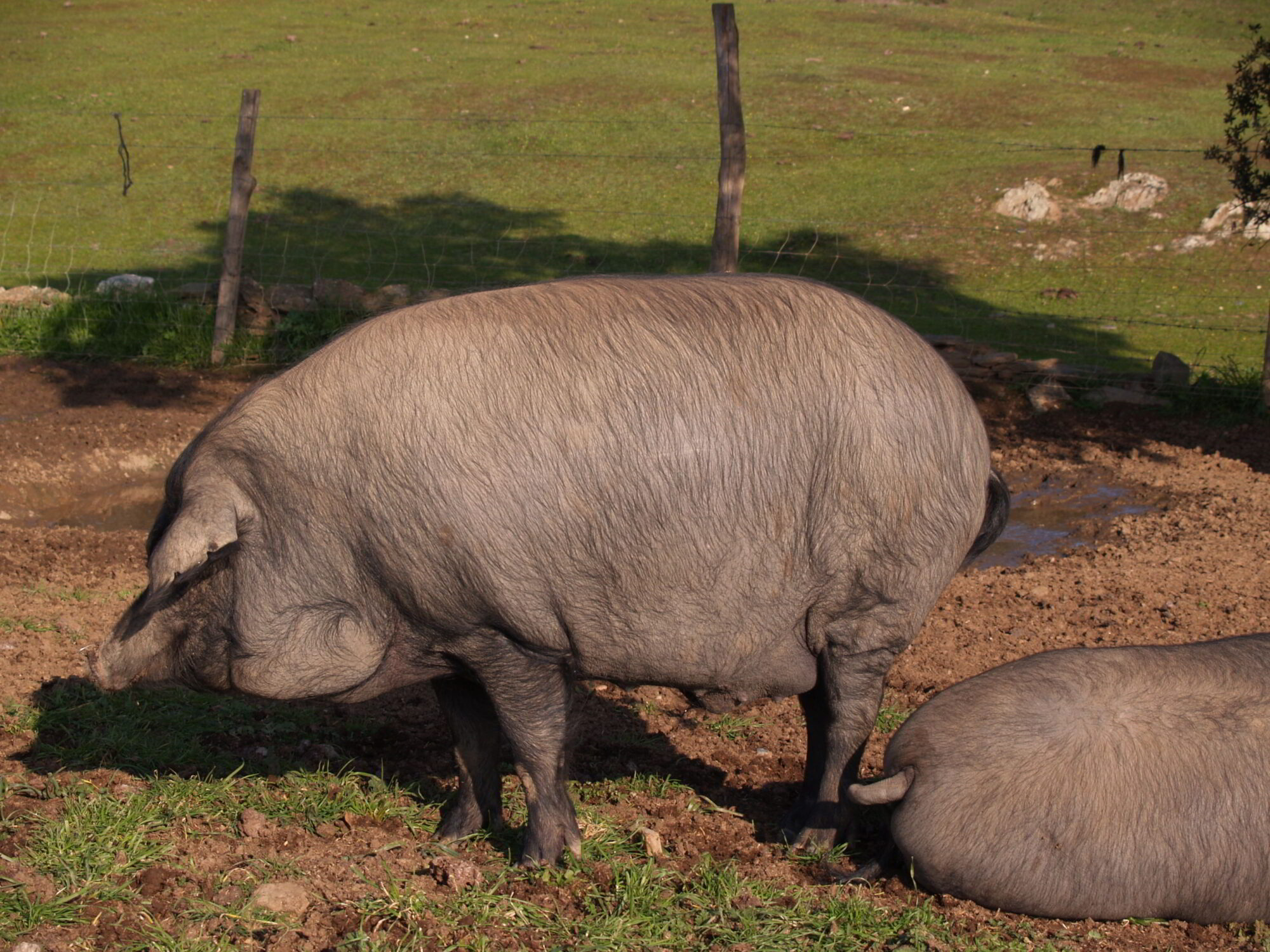
The iberian ‘de recebo’ ham enjoys a great quality, always which exist a good connection between the ‘montanera’ period and the fodder feeding.
c) De cebo. Are those iberian pigs which during their fatten up stage have only been feeded with cereals or fodder compounds, without include acorns in their fatten up process.
All the specific features which should be fulfilled in the set out categories, same as the parameter for the use of the iberian term, are explained in a Quality Rule for the iberian ham elaborated in Spain (Real Decreto 1469/2007 de 2 de noviembre).
